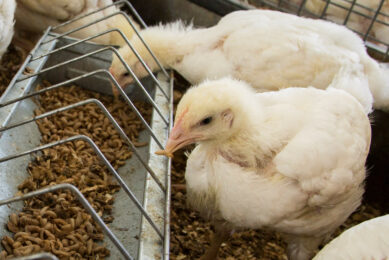Alternative proteins and the future of sustainable food production

To accelerate growth in the alternative proteins sector, 10 tactical actions are crucial, according to a new industry briefing note.
The note, which followed a one-day workshop at Pioneer Group’s Wilton Centre featuring 40 representatives from industry, academia, funding bodies, investors and policymakers, argues that if we want to sustain the increasing global population we have to shift to sustainable alternative proteins.
Until now, the traditional protein production system has relied heavily on livestock farming for the production of meat, eggs and dairy, which has an impact on the environment, including greenhouse gas emissions.
The note argues that nutritious protein sources from plants, seaweeds, insects, fermentation and cultured meat offer sustainable alternatives to animal consumption. However, there are challenges, including regulations, consumer acceptance, smaller production scales, investment needs, differing feedstocks and complex processing techniques to create textures and flavours.
Essential needs for the alternative protein sector
The briefing note says there are several factors to take into account when considering how to support the sector:
- An understanding of the full alternative proteins landscape across the UK, including the capabilities, infrastructure, and finance asset base.
- Access to a database with detailed information about protein structures to predict properties such as allergenicity, solubility and binding properties.
- Defined terminology for the food sector, including alternative proteins.
- Inclusion of alternative proteins in the food pyramid and government ‘Eatwell guide’.
- A framework for regulation of difference proteins, specifying parameters covering standards, performance, safety, functionality and sustainability.
- Access to and development of venture studio, accelerator and incubator facilities and access to scale facilities for key technology development.
- ‘Oven-ready’ projects involving full supply chains, SMEs and large corporates.
- Inclusion in the UK Industrial Strategy.
- An investment community with future-proof products supporting alternative protein enterprises.
- A nationwide communications campaign to raise awareness of alternative proteins and their benefits.
The note highlights the 10 tactical actions being taken forward by organisations.
- Updated mapping of the full alternative proteins landscape across the UK, including an understanding of the UK’s proteins assets base, capabilities, capacities, readiness and investments – Good Food Institute (GFI) and National Alternative Protein Innovation Centre (NAPIC) with a Q4 timeline.
- Develop the concept for a programme of accelerators and incubator spaces for spinoffs and SMEs. Co-locate with clusters of expert human capital, finance, bioprocessing and R+D – Pioneer Group and Growing Kent and Medway (Q1 2025).
- Develop a database of food-grade development and testing facilities across the UK and carry out a gap analysis – GFI, NAPIC and Growing Kent and Medway (Q1 2025).
- Scope a business case for funding for a protein database enabling access to protein structures to accelerate protein development and commercialisation – Bezos Centre for Sustainable Protein (Q1 2025).
- Industry and academia collaboration to generate data for and standardise the methodology for the life cycle assessment of alternative proteins – NAPIC and Bezos Centre for Sustainable Protein (Q4 2025).
- Develop and deliver a programme of regulatory training for SMEs – Food Standards Agency, Advanced Food Regulation, MAST Consulting and Bezos Centre for Sustainable Protein (Q2 2025).
- Sandpit events to create ‘oven-ready’ projects involving full supply chains for development and commercialisation – NAPIC (Q4 2025).
- Assess skills gaps and develop training programme to cross-skill and up-skill the future sustainable proteins workforce – NAPIC, Growing Kent and Medway, Bezos Centre for Sustainable Protein and IChemE (Q2 2025).
- Develop an in-depth policy and regulation stakeholder map for the UK alternative proteins sector – GFI (Q1 2025).
- Develop a series of videos and blogs to highlight the importance of the sector to be launched on a sector wide ‘Alternative Proteins Day’ – Pioneer Group (Q1 2025).
The briefing note will be officially launched at an online event on 21 November.











